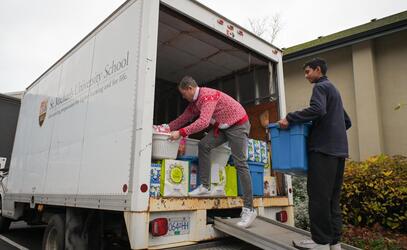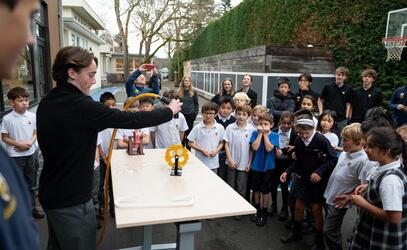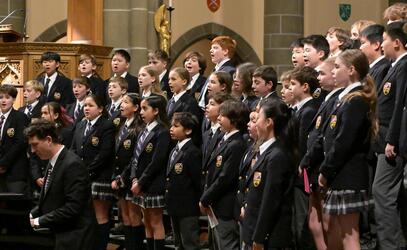“Love and compassion are necessities, not luxuries. Without them, humanity cannot survive.” – Dalai Lama
To observe a small child demonstrating compassion and empathy is certainly heartwarming. It is something that we experience regularly, in our halls, in our classrooms and on the playground. We notice children making the choice to be kind – without being asked and without being told they need to care about another person.
Although practising compassion often occurs naturally for children, it is also intentionally taught in the Junior School. Social-emotional learning for children is important and it is our responsibility to provide an environment in which compassion and empathy can flourish. Each month we highlight a virtue in the Junior School and provide opportunities to learn more about the virtue. In February, by focusing on the virtue of compassion and the Portrait of a Learner trait of empathy, we are making a conscious decision to help children with this learning.
As I circulate through the Junior School, I am frequently reminded of children’s capacity for compassion. In Kindergarten, children have been studying pets and learning about the work of veterinarians. Last week I was greeted most enthusiastically by our youngest learners who were showing me their little stuffie pets with bandages wrapped around the injuries – with great attention and interest they are caring for them in their vet clinic, complete with x-rays and more. Compassion indeed.
The Grade 1 students are studying fairy tales and, in the Imagination Lab, they are designing items that Goldilocks could give the bears to make a difference in their lives. Their designs have included building a new chair for the bears, creating a toy for baby bear, designing a chair with a claw sharpener, and designing a new lock for the bears’ front door. Apology notes to the bears were also suggested. Empathy demonstrated in each design.
Older students are involved in a design challenge based on the question, “How might we support students at the Junior School to feel loved and supported?” Students interview a partner to understand their likes, dislikes and fears, and are given time to design and build an item that could be kept in a cubby or backpack to support their partner on difficult days. They will present them to each other and describe how the item was made with empathy.
These are just a few examples of learning opportunities for our students. As educators we believe that young children learn by engaging in an activity that requires them to think critically and creatively, reflect on it and then eventually work towards transferring this learning in a broader sense, in our community and beyond. It is important that they learn to analyze a need and to take action in helping others. This is the essence of experiential learning.
This month, and throughout the year, we will provide opportunities for our students to take action by engaging with our community. This occurs when our young Kindergarten children ‘wrap up’ their pet unit by connecting with the SPCA and decide how they can be of help, when the children visit the James Bay Care Home and interact with the residents, when students collect and donate soup cans for The Mustard Seed, and when the older students decide to help Anawim House. Through this intentional experiential learning, students are looking at the needs of our local people and community, and they are tackling the complex issues of our world in order to act with compassion and empathy. These actions are internalized and naturally become part of their everyday way of being.
Young children have great capacity for compassion and empathy. It is the responsibility of those who nurture them to provide opportunities to develop this from within.



